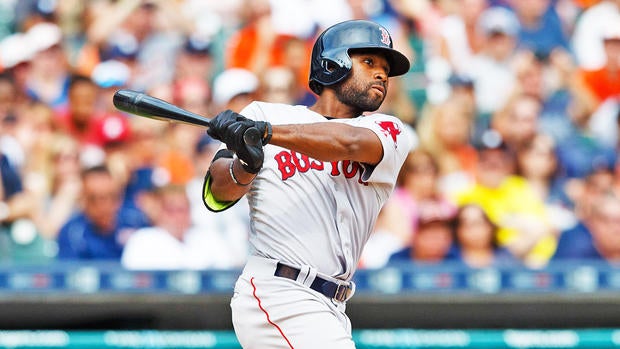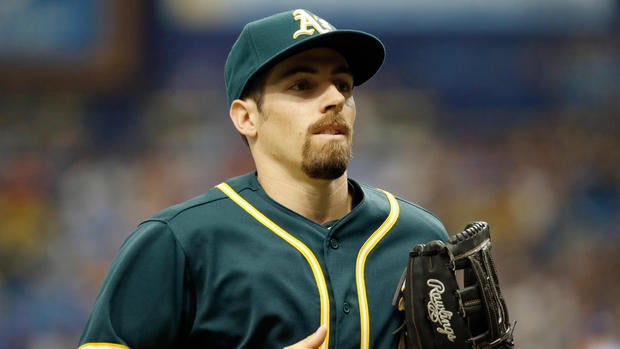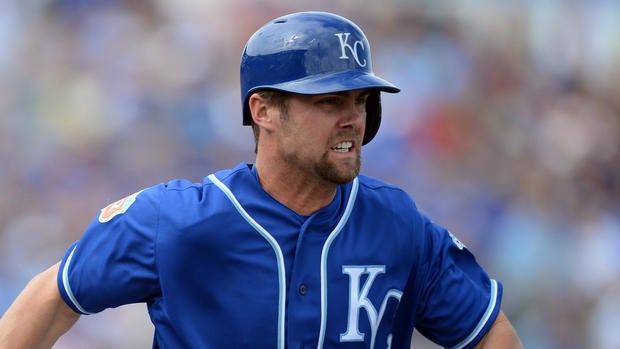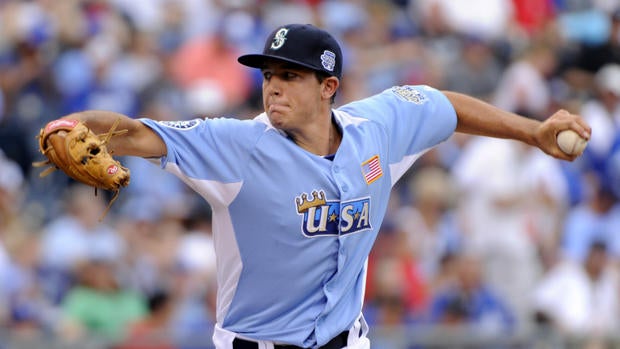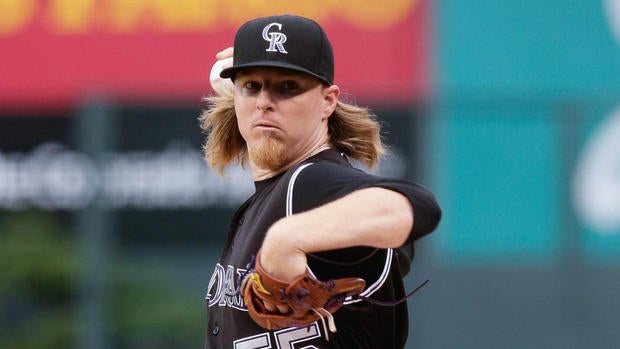The old saying is that it takes five years to evaluate a draft class, though I've always felt that was a little generous. Three years is usually enough to give you an idea of what you have. There are always exceptions, but by then the prospects should have separated themselves from the suspects.
Since the 2016 draft will begin Thursday, this is as good a time as any to go back and review the 2011 draft. That 2011 draft class has already produced one Rookie of the Year, two top-three finishes in the Cy Young voting, and one top-five finish in the MVP voting. Plus a bunch of All-Star Game appearances too.
Wins Above Replacement, or WAR, is certainly not perfect or the definitive stat to measure performance. It does work very well for an exercise like this though. So, with an assist from Baseball-Reference.com, let's review the 2011 draft class.
[h=3]Top 15 Players to Date[/h]<figure class="image-embed pull-none image-original">
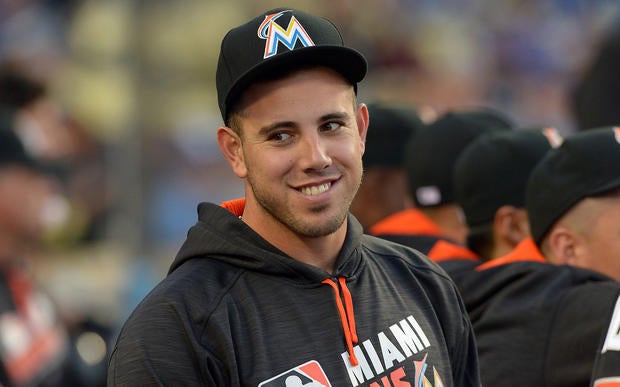 <figcaption class="image-embed-figcaption">Jose Fernandez has been the best player from the 2011 draft to date. USATSI </figcaption></figure> 1. RHP Jose Fernandez, Marlins (1st round, 14th overall) -- 12.4 WAR
<figcaption class="image-embed-figcaption">Jose Fernandez has been the best player from the 2011 draft to date. USATSI </figcaption></figure> 1. RHP Jose Fernandez, Marlins (1st round, 14th overall) -- 12.4 WAR
Fernandez has been truly remarkable at such a young age. He leads the draft class in career WAR despite missing more than a year due to Tommy John surgery. The Marlins plucked him out a Tampa high school and Fernandez spent just one year in the minors. He jumped from Class A to MLB in 2013 and dominated right away. We're talking All-Star Game, Rookie of the Year, and third place in the Cy Young voting. Incredible. Twelve teams passed on Fernandez, including the Diamondbacks twice.
2. SS Mookie Betts, Red Sox (5th round, 172nd overall) -- 10.9 WAR
By no means was Betts an unknown in 2011. He was a three-sport star in high school (baseball, basketball, bowling) and his athleticism was obvious. The Red Sox loved his tools -- last year, Alex Speier of the Boston Globe wrote about the "neuro-scouting" the Red Sox used to evaluate Betts before the draft -- so they paid him a well-above-slot $750,000 bonus. Now he's one of the premier power-speed players in the game. Betts was originally drafted as a shortstop, though he moved to second and then the outfield
3. RHP Sonny Gray, Athletics (1st round, 18th overall) -- 9.9 WAR
Vanderbilt is one of the premier player development programs in the country. Every year they seem to produce a first-rounder or three. Gray was the staff ace at Vandy as a junior, though he did have some doubters because he's only 5-foot-11 (there has long been a bias against sub-6-foot righties). Gray has proved those doubters wrong thanks to his quality stuff and off-the-charts competitiveness. He finished third in the AL Cy Young voting last year.
4. RHP Gerrit Cole, Pirates (1st round, 1st overall) -- 9.1 WAR
Cole was not a slam-dunk, no-doubt-about-it first-overall pick the way Stephen Strasburg and Bryce Harper were in 2009 and 2010, respectively. Heck, Cole was not even considered the best UCLA pitcher in the draft by some. Teammate Trevor Bauer had a better draft year -- Bauer won the Golden Spikes Award as college baseball's best player in 2011 -- but Cole was a better pro prospect because of his raw stuff. The Pirates grabbed Cole with the top pick and have been rewarded with a bonafide ace.
<figure class="image-embed pull-none image-large">
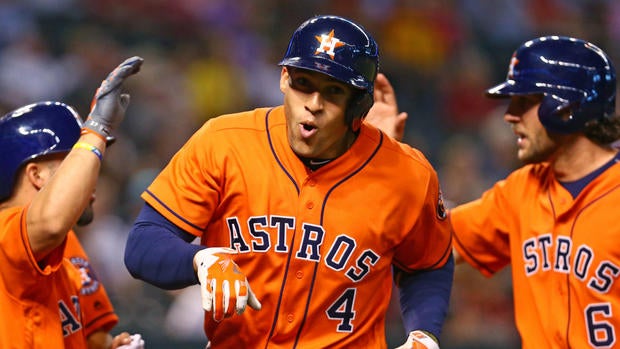 <figcaption class="image-embed-figcaption">George Springer has given the Astros a spark atop the lineup. USATSI </figcaption></figure> 5. OF George Springer, Astros (1st round, 11th overall) -- 9.0 WAR
<figcaption class="image-embed-figcaption">George Springer has given the Astros a spark atop the lineup. USATSI </figcaption></figure> 5. OF George Springer, Astros (1st round, 11th overall) -- 9.0 WAR
The concerns about Springer's propensity to swing-and-miss were very real at the time of the draft. He struck out in 18.5 percent of his plate appearances at UConn, high for a first-round prospect. Springer still strikes out a bunch, but he's overcome those swing-and-miss issues to be a dominant two-way player who can beat you in so many different ways.
6. 3B Anthony Rendon, Nationals (1st round, 6th overall) -- 8.2 WAR
Rendon was the consensus top position player in the draft, and it was a surprise when he slipped to the sixth-overall pick. To be fair to the teams that passed on him, shoulder and ankle problems were a big red flag at the time. Rendon was in the big leagues less than two years after being drafted, and he finished fifth in the NL MVP voting in 2014, his first full season in the show. He's done that while shuffling back and forth between second base and third base.
7. OF Kevin Pillar, Blue Jays (32nd round, 979th overall) -- 7.5 WAR
Despite setting a Division II record with a 54-game hitting streak in 2010, Pillar had to settle for a $1,000 bonus as a 32nd-round pick in 2011. His elite center field defense gave him a carrying tool and allowed him to reach the show only two years after being drafted. Pillar has been an incredible value for the Blue Jays, even if he does it with defense more than offense.
8. SS Francisco Lindor, Indians (1st round, 7th overall) -- 7.2 WAR
Lindor was the first high school position player taken in 2011, and his development has been textbook. He reached MLB in his fourth full pro season as a 21-year-old and is already on the very short list of the best shortstops in baseball. Lindor hits, gets on-base, defends, runs and is ultra-likeable. He's a franchise player in every way.
9. RHP Kyle Hendricks, Rangers (8th round, 264th overall) -- 5.8 WAR
The 2011 draft was unusually deep with Ivy League pitchers and Hendricks, a Dartmouth kid, seemingly reinvented himself in pro ball. He went from being a low-90s pitcher with a curveball and a changeup in college to an upper-80s pitcher with a knockout changeup and an effective cutter as a professional. It helps that Hendricks has exquisite command. The Rangers selected Hendricks in the eighth round then sent him to the Cubs in the Ryan Dempster trade one year later.
10. RHP Cody Allen, Indians (23rd round, 698th overall) -- 5.5 WAR
Twenty-nine teams are wondering how they missed on Allen in 2011. He was a starter with a good curveball at High Point University, but when the Indians stuck him in the bullpen in pro ball, his velocity jumped into the mid-90s and he zoomed through the minors. Allen reached the big leagues just 13 months after being drafted. That's incredible for a 23rd-round pick. He was the second 2011 draftee to reach the show behind Bauer.
Since the 2016 draft will begin Thursday, this is as good a time as any to go back and review the 2011 draft. That 2011 draft class has already produced one Rookie of the Year, two top-three finishes in the Cy Young voting, and one top-five finish in the MVP voting. Plus a bunch of All-Star Game appearances too.
Wins Above Replacement, or WAR, is certainly not perfect or the definitive stat to measure performance. It does work very well for an exercise like this though. So, with an assist from Baseball-Reference.com, let's review the 2011 draft class.
[h=3]Top 15 Players to Date[/h]<figure class="image-embed pull-none image-original">

Fernandez has been truly remarkable at such a young age. He leads the draft class in career WAR despite missing more than a year due to Tommy John surgery. The Marlins plucked him out a Tampa high school and Fernandez spent just one year in the minors. He jumped from Class A to MLB in 2013 and dominated right away. We're talking All-Star Game, Rookie of the Year, and third place in the Cy Young voting. Incredible. Twelve teams passed on Fernandez, including the Diamondbacks twice.
2. SS Mookie Betts, Red Sox (5th round, 172nd overall) -- 10.9 WAR
By no means was Betts an unknown in 2011. He was a three-sport star in high school (baseball, basketball, bowling) and his athleticism was obvious. The Red Sox loved his tools -- last year, Alex Speier of the Boston Globe wrote about the "neuro-scouting" the Red Sox used to evaluate Betts before the draft -- so they paid him a well-above-slot $750,000 bonus. Now he's one of the premier power-speed players in the game. Betts was originally drafted as a shortstop, though he moved to second and then the outfield
3. RHP Sonny Gray, Athletics (1st round, 18th overall) -- 9.9 WAR
Vanderbilt is one of the premier player development programs in the country. Every year they seem to produce a first-rounder or three. Gray was the staff ace at Vandy as a junior, though he did have some doubters because he's only 5-foot-11 (there has long been a bias against sub-6-foot righties). Gray has proved those doubters wrong thanks to his quality stuff and off-the-charts competitiveness. He finished third in the AL Cy Young voting last year.
4. RHP Gerrit Cole, Pirates (1st round, 1st overall) -- 9.1 WAR
Cole was not a slam-dunk, no-doubt-about-it first-overall pick the way Stephen Strasburg and Bryce Harper were in 2009 and 2010, respectively. Heck, Cole was not even considered the best UCLA pitcher in the draft by some. Teammate Trevor Bauer had a better draft year -- Bauer won the Golden Spikes Award as college baseball's best player in 2011 -- but Cole was a better pro prospect because of his raw stuff. The Pirates grabbed Cole with the top pick and have been rewarded with a bonafide ace.
<figure class="image-embed pull-none image-large">

The concerns about Springer's propensity to swing-and-miss were very real at the time of the draft. He struck out in 18.5 percent of his plate appearances at UConn, high for a first-round prospect. Springer still strikes out a bunch, but he's overcome those swing-and-miss issues to be a dominant two-way player who can beat you in so many different ways.
6. 3B Anthony Rendon, Nationals (1st round, 6th overall) -- 8.2 WAR
Rendon was the consensus top position player in the draft, and it was a surprise when he slipped to the sixth-overall pick. To be fair to the teams that passed on him, shoulder and ankle problems were a big red flag at the time. Rendon was in the big leagues less than two years after being drafted, and he finished fifth in the NL MVP voting in 2014, his first full season in the show. He's done that while shuffling back and forth between second base and third base.
7. OF Kevin Pillar, Blue Jays (32nd round, 979th overall) -- 7.5 WAR
Despite setting a Division II record with a 54-game hitting streak in 2010, Pillar had to settle for a $1,000 bonus as a 32nd-round pick in 2011. His elite center field defense gave him a carrying tool and allowed him to reach the show only two years after being drafted. Pillar has been an incredible value for the Blue Jays, even if he does it with defense more than offense.
8. SS Francisco Lindor, Indians (1st round, 7th overall) -- 7.2 WAR
Lindor was the first high school position player taken in 2011, and his development has been textbook. He reached MLB in his fourth full pro season as a 21-year-old and is already on the very short list of the best shortstops in baseball. Lindor hits, gets on-base, defends, runs and is ultra-likeable. He's a franchise player in every way.
9. RHP Kyle Hendricks, Rangers (8th round, 264th overall) -- 5.8 WAR
The 2011 draft was unusually deep with Ivy League pitchers and Hendricks, a Dartmouth kid, seemingly reinvented himself in pro ball. He went from being a low-90s pitcher with a curveball and a changeup in college to an upper-80s pitcher with a knockout changeup and an effective cutter as a professional. It helps that Hendricks has exquisite command. The Rangers selected Hendricks in the eighth round then sent him to the Cubs in the Ryan Dempster trade one year later.
10. RHP Cody Allen, Indians (23rd round, 698th overall) -- 5.5 WAR
Twenty-nine teams are wondering how they missed on Allen in 2011. He was a starter with a good curveball at High Point University, but when the Indians stuck him in the bullpen in pro ball, his velocity jumped into the mid-90s and he zoomed through the minors. Allen reached the big leagues just 13 months after being drafted. That's incredible for a 23rd-round pick. He was the second 2011 draftee to reach the show behind Bauer.
